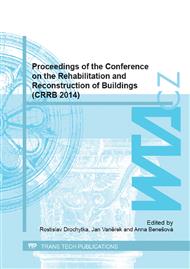p.141
p.145
p.149
p.153
p.157
p.161
p.165
p.169
p.173
Influence of Firing Temperature on the Quality of Fly Ash Body
Abstract:
Nowadays, over 95 % of fly ash is used as construction products in the Czech Republic. However, around 80 % of fly ash is used for renovation of open-pit quarries and areas affected by human activity. Production of artificial aggregate is the way to use over 90 % of energy by-products in the building material industry. It is necessary to find appropriate combination of parameters of input materials and conditions of production to get optimal properties of aggregate. The paper gives an account of the influence of parameters of fly ash and conditions of firing on the quality of ceramic body made from fly ash. Temperatures of 1050 °C, 1150 °C and 1200 °C were examined. The research focused on the structure of the ceramic body as well as its physico-mechanical parameters.
Info:
Periodical:
Pages:
157-160
Citation:
Online since:
August 2015
Authors:
Keywords:
Price:
Сopyright:
© 2015 Trans Tech Publications Ltd. All Rights Reserved
Share:
Citation:


